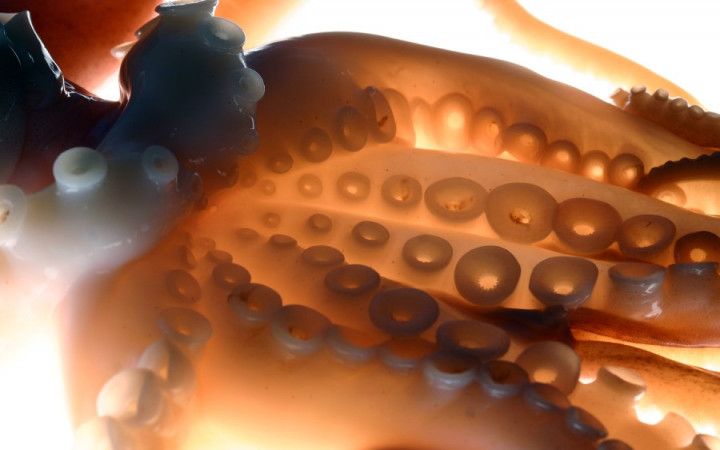Today’s Wonder of the Day was inspired by collin. collin Wonders, “How do octopuses change colour when they are colour blind?” Thanks for WONDERing with us, collin!
Today’s question might sound a little odd. But let’s face it. If you have an octopus, you’ll probably need to hide it. After all, most parents and teachers aren’t going to let you walk around with an octopus.
Some people find octopuses frightening. With their eight tentacles and huge heads, they do look a little scary. Their soft bodies, though, are a tasty meal for many predators. Sharks and stingrays are just a couple of animals that crave octopus for dinner. Luckily, octopuses are really good at hiding themselves.
Those soft, boneless bodies allow octopuses to change shape. Octopuses also have special skin cells full of yellow, red, brown and black pigment. This allows them to change color. Octopuses learn at an early age how to contract their muscles to change both their color and their shape.
How do octopuses hide? They change to look like something else. Sometimes, they flatten their bodies to look like the smooth sea floor. Other times, they change to look just like a jagged coral reef. Octopuses are even able to take on the color of their surroundings despite being color blind! Isn’t it amazing how creatures can learn to hide from their enemies?
All octopuses can camouflage themselves. But one particular kind of octopus is very good at hiding. Called the mimic octopus, it can copy the form of many different species.
Scientists first found the mimic octopus in 1998 off the coast of Indonesia. The animal has since been spotted in the waters of Malaysia, as well. The mimic octopus lives in open waters and hunts during the day. For this reason, it doesn’t have many places to hide from predators.
Instead, this special octopus has learned to hide in plain sight. It does so by changing shape and color to look like other animals. In total, scientists believe the mimic octopus can imitate up to 13 different species. This includes jellyfish, anemones, and mantis shrimp. The mimic octopus can also change to look like venomous lionfish and sea snakes.
Can you imagine that? One minute, you’re looking at an octopus. The next minute, it’s a lionfish. You blink, and now it’s a jellyfish. You rub your eyes to make sure you’re not seeing things. The octopus is now a shrimp! You can see how the mimic octopus confuses its predators.
The mimic octopus doesn’t just look like the animals it imitates. It acts like them, too! For example, when a mimic octopus wants to look like a sea snake, it copies the snake’s movement. It sticks out two of its arms and moves them in opposite directions. This scares away would-be predators pretty quickly.
Do you think you could find a mimic octopus in the ocean? You’ll need to look closely. They’re great at hiding anywhere. Could that jellyfish really be an octopus? How about that piece of coral? You might see one without knowing it!
Standards: NGSS.LS1.A, NGSS.LS1.D, CCRA.L.3, CCRA.L.6, CCRA.R.1, CCRA.R.2, CCRA.R.4, CCRA.R.10, CCRA.W.2, CCRA.W.7, CCRA.W.8, CCRA.W.9, CCRA.L.1, CCRA.L.2, CCRA.SL.1, CCRA.SL.2




